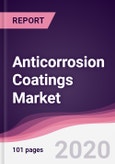What is an Anti-corrosion coating?
Corrosion is the surface deterioration of metal/alloys within particular environment because of moisture, salt spray, oxidation or exposure to industrial chemicals. Anti-corrosion coatings prevent the corrosion of metals/alloys by acting as a barrier between the metals and the corrosive materials in contact. The coatings are highly useful for enhancing the sheet life, its usages and aesthetic value. These sheets are being utilized in various industries ranging from automotive, marine, oil & gas, industrial, power generation, and others.
What are the major applications for Coatings?
The various end users assessed include Oil & gas, automotive, aerospace, construction & infrastructure, marine, and energy & power. In marine industry, corrosion control is used to reduce or entirely eliminate sea water corrosion problems. Many destructive attacks can occur in the structure and other equipment of ships due to direct contact of these parts with saline sea water. Aqueous corrosion is the problem encountered after coming in contact with the sea water. Marine industry can also experience atmospheric corrosion due to exposure of metallic parts in the atmosphere containing reactive chemical compounds.
Automotive industry uses anti-corrosion paint technology as solution from rusting in various parts of the vehicle. These uniform anti-corrosion coatings provides effective base coat for paints, sealers, e-coat, and other topcoats above the metallic vehicle parts. These coatings can be used in fasteners, body hardware, door closure, and lock part.
Market Research and Market Trends of Anti-corrosion coatings
- New technology has been developed where coatings can self-heal with the addition of reactive microcapsules into an epoxy-polyamine coating matrix. Microcapsules are diluted in reactive principal materials with self-healing character to act upon damage. The diluted microcapsules are modified to restrain water or solvent materials, make them acceptable for coatings and paints for underwater structures. This technology works efficiently in solvent borne or water borne paint systems. The technology is known for its function its anti- corrosion protection like used in submerged and underground structures.
- Polyaspartics have been extensively used for coating steel to prevent corrosion but in recent times most of the manufacturers are promoting it as floor coatings, since it has low Volatile Organic Content, can raise solids levels and optimize the workability time. Cracks and joints is one of the major problems present in rigid epoxy floor systems. The continuous movement of thermal or load transfer factors cause cracking in the polymer floor systems.
- Growing demand for inert, cost efficient, environmental friendly and low friction coatings have resulted for the need of Polymer coatings due to its advantages like low density, anti-corrosion properties, self-lubricity, low cost and ease of processing. But limiting factors such as low load bearing capacity has resulted in the developments of polymer based Nano composite coatings to improve the tribological performance of the polymer coating.
- Industries have been using hydrophobic materials and coatings for decades. Now, material scientists are going beyond simple water repellency to include additional functionality for more specific applications. New advances in material science are making it feasible to create smart, functional coatings that combine hydrophobic properties with added functionality for specific industrial, consumer, medical or military applications. Functional coatings are made by introducing additives or manipulating the nanostructure or chemical composition of the coating itself in order to change the way the coating responds in the presence of specific stimuli. These stimuli-responsive materials are able to chemically or physically react to their environment in different ways like self-cleaning and can change their surface topography in response to light in order to modulate characteristics such as wettability or surface friction.
Who are the Major Players in Anti Corrosion Coatings Market?
The companies referred in the market research report include the 3M (US), BASF SE (Germany), Hempel Group (Europe), and Kansai Paint Co., Ltd (Japan), PPG Industries (US), The Dow Chemical Company (US), Wacker Chemie AG (Germany) and other companies.
What is our report scope?
The report incorporates in-depth assessment of the competitive landscape, product market sizing, product benchmarking, market trends, product developments, financial analysis, strategic analysis and so on to gauge the impact forces and potential opportunities of the market. Apart from this the report also includes a study of major developments in the market such as product launches, agreements, acquisitions, collaborations, mergers and so on to comprehend the prevailing market dynamics at present and its impact during the forecast period 2020-2025.
Key Takeaways from this Report
- Evaluate market potential through analyzing growth rates (CAGR %), Volume (Units) and Value ($M) data given at country level – for product types, end use applications and by different industry verticals.
- Understand the different dynamics influencing the market – key driving factors, challenges and hidden opportunities.
- Get in-depth insights on your competitor performance – market shares, strategies, financial benchmarking, product benchmarking, SWOT and more.
- Analyze the sales and distribution channels across key geographies to improve top-line revenues.
- Understand the industry supply chain with a deep-dive on the value augmentation at each step, in order to optimize value and bring efficiencies in your processes.
- Get a quick outlook on the market entropy – M&A’s, deals, partnerships, product launches of all key players for the past 4 years.
- Evaluate the supply-demand gaps, import-export statistics and regulatory landscape for more than top 20 countries globally for the market.
Table of Contents
Methodology

LOADING...








